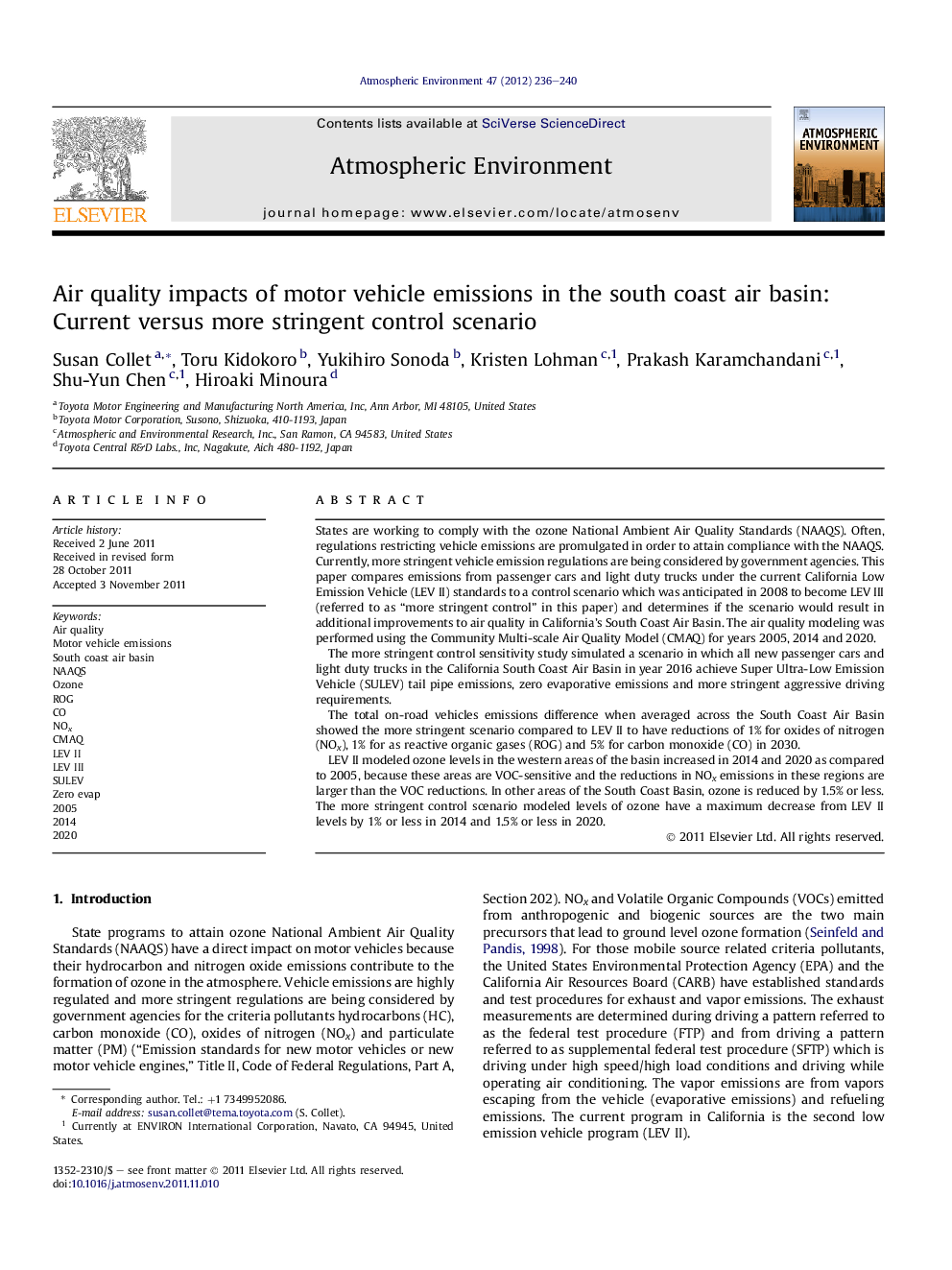| کد مقاله | کد نشریه | سال انتشار | مقاله انگلیسی | نسخه تمام متن |
|---|---|---|---|---|
| 4439010 | 1620424 | 2012 | 5 صفحه PDF | دانلود رایگان |

States are working to comply with the ozone National Ambient Air Quality Standards (NAAQS). Often, regulations restricting vehicle emissions are promulgated in order to attain compliance with the NAAQS. Currently, more stringent vehicle emission regulations are being considered by government agencies. This paper compares emissions from passenger cars and light duty trucks under the current California Low Emission Vehicle (LEV II) standards to a control scenario which was anticipated in 2008 to become LEV III (referred to as “more stringent control” in this paper) and determines if the scenario would result in additional improvements to air quality in California’s South Coast Air Basin. The air quality modeling was performed using the Community Multi-scale Air Quality Model (CMAQ) for years 2005, 2014 and 2020.The more stringent control sensitivity study simulated a scenario in which all new passenger cars and light duty trucks in the California South Coast Air Basin in year 2016 achieve Super Ultra-Low Emission Vehicle (SULEV) tail pipe emissions, zero evaporative emissions and more stringent aggressive driving requirements.The total on-road vehicles emissions difference when averaged across the South Coast Air Basin showed the more stringent scenario compared to LEV II to have reductions of 1% for oxides of nitrogen (NOx), 1% for as reactive organic gases (ROG) and 5% for carbon monoxide (CO) in 2030.LEV II modeled ozone levels in the western areas of the basin increased in 2014 and 2020 as compared to 2005, because these areas are VOC-sensitive and the reductions in NOx emissions in these regions are larger than the VOC reductions. In other areas of the South Coast Basin, ozone is reduced by 1.5% or less. The more stringent control scenario modeled levels of ozone have a maximum decrease from LEV II levels by 1% or less in 2014 and 1.5% or less in 2020.
► Emissions were modeled for LEV II and a scenario anticipated in 2008 to become LEV III.
► The subject was passenger cars and light duty trucks in California South Coast Air Basin.
► The new scenario average emission reductions were 2% for NOx and ROG and 5% for CO in 2030.
► LEV II modeled ozone levels in the western areas increase 30% in 2014 and 2020 from 2005.
► The anticipated scenario modeled ozone decreased from LEV II by 1% in 2014 and 1.5% in 2020.
Journal: Atmospheric Environment - Volume 47, February 2012, Pages 236–240